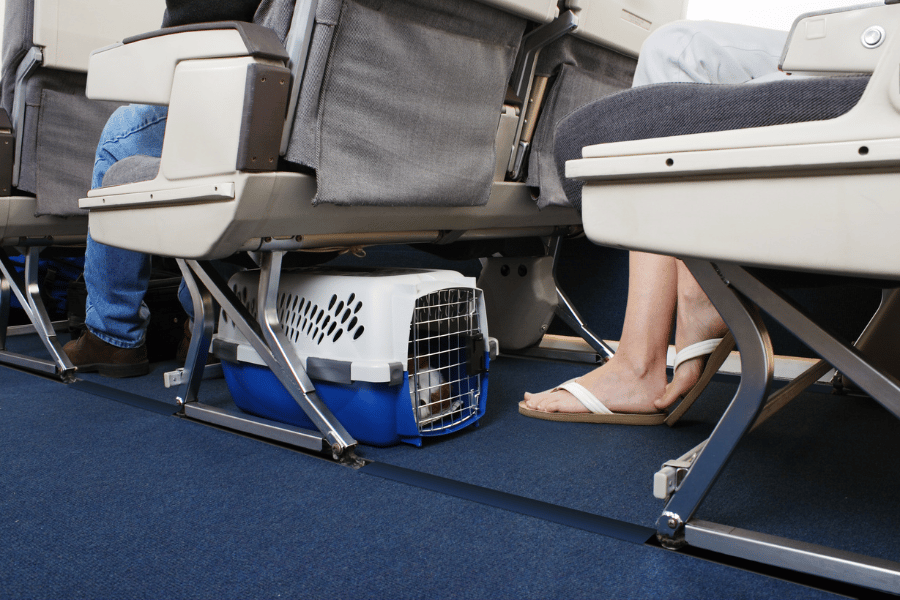Moving a pet overseas can make you feel anxious, but if you prepare in advance, you can ensure a smooth journey for your dog or cat. In this article, we’ll be discussing the important steps for traveling abroad with your pet. We’ll be going through the importance of planning your trip, the required documents you’ll need to bring along, and the costs associated with moving your pets overseas. We’ll also be talking about the qualifying limits for bringing certain pets into Europe, and the different modes of transportation available when it comes to transporting your pet, so you’ll be able to navigate confidently on your travel without any unexpected worries.
Planning your trip
Moving overseas with pets can be quite a stressful endeavor for you, but even more so for your pets. You must take into account all of the necessary steps that need to be followed when taking such an important journey. For example, before traveling to Europe with your pet, it must have a microchip implanted and be given a rabies vaccine. After that, you will have to wait 21 days before you can take your pet on your travels to Europe. Your pet will also be required to receive an EU health certificate issued by your vet 10 days before the date of your departure.
To ensure everything goes smoothly and you have a good experience traveling abroad, you should also plan your selection of an appropriate airline. Most airlines advocate similar rules. Those rules will specify the overall dimensions of your pet carrier, weight restrictions for your pet, as well specific temperature requirements during boarding and unloading at the airport. Although prices may vary between air carriers when transporting pets there should be no compromise made on the quality or safety of your pets. Picking the right airline will ensure that your animal companion arrives safely and securely in its new home abroad.
Documents needed for moving your pet overseas
Just like you need to have your documents and visa in order when moving abroad, so do your pets. Before you travel to Europe with pets, some key documents must accompany you at all times. To make sure their trip is as seamless as possible, owners should have the following papers:
● Pet passport
● International health certificates
● Other documents if applicable
A pet passport is a document used to provide proof that your pet has been microchipped. It will also provide the medical history of your pet, such as vaccinations and deworming that are necessary for your pet’s travel. This official government-issued document serves two important purposes: it nationalizes the animal into another country and confirms vaccination against rabies and other diseases to reduce the risk of transmission between humans, wild animals, and pets. The EU pet passport includes important information about the animal such as breed, age, and gender plus a photo for identification purposes. Additionally, owners can make sure to update any recent medical treatments or vaccinations to stay current on regulations that may affect their travel plans with their pets.
International health certificates for pets are important documents used to certify the animal’s health and well-being when traveling internationally. They must include information on the animal itself, details about vaccinations before travel, and proof that the pet has been clinically examined by a veterinarian. It will also contain any additional health and/or quarantine requirements in the destination country, alongside the owner’s contact information. The document also needs to be signed, dated, and stamped by an accredited vet before it can be submitted for approval before travel.
Health requirements and insurance for moving a pet overseas
When moving abroad with pets it’s important to meet all the necessary vaccination standards for the destination country to avoid being denied entry or receiving fines from local authorities. It should go without saying but medical records must always be kept up to date, and depending on the duration of the trip it may be necessary that additional vaccinations are required.
Furthermore, taking out appropriate travel insurance for your pet is helpful in case medical attention during overseas travel is needed. Pet health care can become very expensive when outside of one’s own country so this step should not be neglected even with basic cover included within the regular policies. Additionally, if the travel includes air transportation it is important to ask airline companies about their specific pet policies as different carriers may have unique requirements such as certificates and kennels.
How much does it cost to move a pet to Europe?
Moving a pet overseas can seem overwhelming due to all of the legal requirements, paperwork, and expenses involved. Knowing what is required in advance will help ensure that you have a relaxing journey along the way and make sure that your furry friends arrive safely at their new home.
The cost of transporting pets overseas varies by country depending on factors like mode of travel, breed size, and health restrictions but typically falls between $1,000 to $3,000 for one animal. When calculating the cost, it is important to know that all dogs and cats must be microchipped for identification before entering European Union (EU) countries.
International airlines typically charge approximately $100 to $200 per flight depending on the size and weight of the animals being transported. The price can quickly add up if it is necessary to transfer planes or if layovers occur.
What pets qualify to travel to Europe?
When you’re moving a pet overseas, you should know that not all animals meet the criteria of being safely able to travel across borders into Europe. Certain species that can cause danger to humans are prohibited from entering altogether due to potential public health or safety concerns that could arise if an animal was to be imported. Although many other diverse species exist that are permitted, they must still meet additional requirements; all pets must present a valid pet passport enshrining their vaccination history and pest prevention.
It is also important that pet owners consider the ultimate comfortability for both themselves and furry family members when journeying out of town with pets. Be sure to carefully research the different accommodations available, including any size limits or restrictions that may be essential to avoid unnecessary trouble from airline authorities. Overall, with guidance and preparation, traveling on a European adventure while having your pet pal tag along can be made simpler by following these factors into consideration.
Flying with pets
The fastest transportation option for moving a pet overseas is by airplane. The process of flying from one country to another, abiding by different regulations, and navigating the foreign environment can all add up to a significant amount of pressure for both the pet and the owner. However, it doesn’t have to be this way if you are properly prepared for your journey ahead of time.
When it comes to taking your furry friend with you on trips to Europe there is an extensive set of regulations to be aware of. The rules vary depending on the country, on the airline and animal species. Having an itinerary that is structured before departure with all necessary permits already acquired can save plenty of time at customs checkpoints and ensure a safe passage for everyone involved in the trip.
Before buying a plane ticket, it’s smart to check the rules for transporting pets with several airlines. Some airline companies may have more pet-friendly regulations than others. With most major airlines, pets travel in the airplane cargo, but there are also specialized air transportation services that may allow your dog or cat to travel in cabin for a fee. Most likely, service and emotional support animals are allowed to travel with you in cabin.
Adequately prepping and making sure you’re aware of the regulations is integral to a safe, enjoyable journey with your pet in tow. Knowing what needs to be done ahead of departure can significantly reduce any anxiety that may be rising for both owners and animals alike during this travel period. With all these steps followed through, your time abroad with your beloved companion should hopefully be one characterized by peace and joy rather than fear.
How to bring a pet to Europe without flying
How to move abroad with pets without flying? If you wish to bring your pet to Europe, there are other effective ways of doing so without the tension associated with flying. One such approach is by ship. There exist various vehicle ferry services which are designed especially for pet transport across continental borders at sea or large watercourses between different territories, including Spain, France, Italy, Britain, Belgium, The Netherlands, and Germany as well as other destinations on mainland Europe.
It is important to do adequate research before traveling with a pet by ferry, as size and weight limits can vary between companies, so certain animals may need to be anesthetized or created for the journey depending on their size. Therefore, it is best to determine whether one’s companion animal meets these requirements before embarking on the voyage to ensure maximum comfort during transit.
Once the logistics are sorted out, traveling to Europe with one’s pet can be a rewarding experience that eliminates the common hassles associated with flying large animals, such as long waits in airline lounges or subjecting them to uncomfortable security checks. Such wonderful journeys by sea also have the benefit of providing wealthy opportunities for humans and pets alike to enjoy stunning maritime views, partake in on-board activities, purchase delicious snacks at local markets during pit stops and explore the vibrant cultures of various exotic destinations.
Excited about starting a new life in another country? Plan ahead with more helpful guides for moving abroad.




